Musculus rectus abdominis (xlas)
Preview:
simple/clean drawings; lots of additional info (+latin names)
Synonyms: abs; rectus abdominis muscle; straight abdominis muscle; six pack; six-pack; sixpack; rectus
Summary
The Musculus rectus abdominis, often referred to as "abs" (short for "abdominal muscles"), sits in front of your stomach and is visible on trained and low body fat people. In fact, there are two individual muscle cords right next to each other (that's why I'll refer to them in plural). Besides being used for breathing the muscles also bend the torso and lift the pelvis forward - thus the abs are the main antagonist of the back extensor muscles (M. erector spinae). There are tendons that separate the long muscle cords into packs for better muscle contraction precision.
Basics
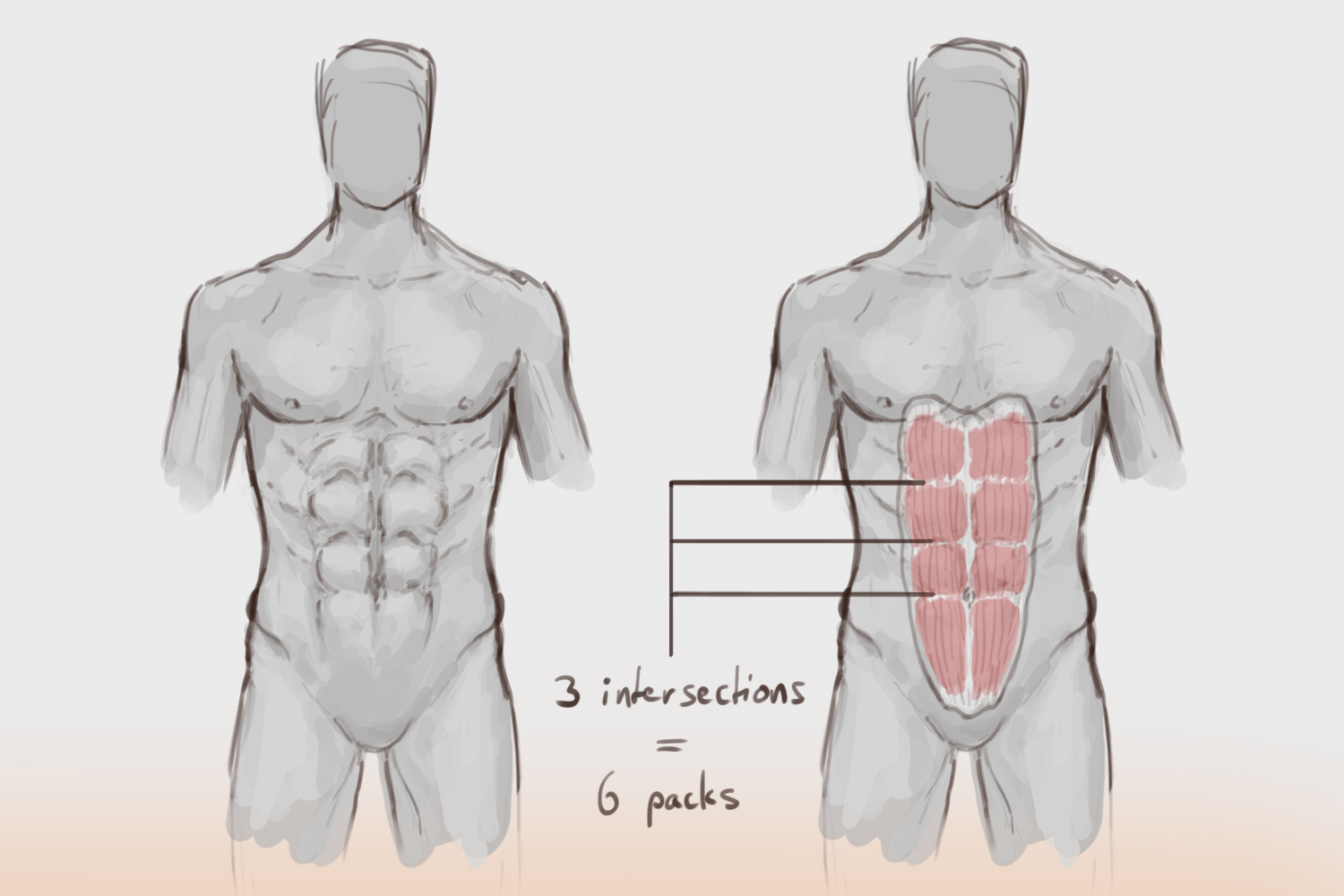 general placement of the M. rectus abdominis
general placement of the M. rectus abdominis
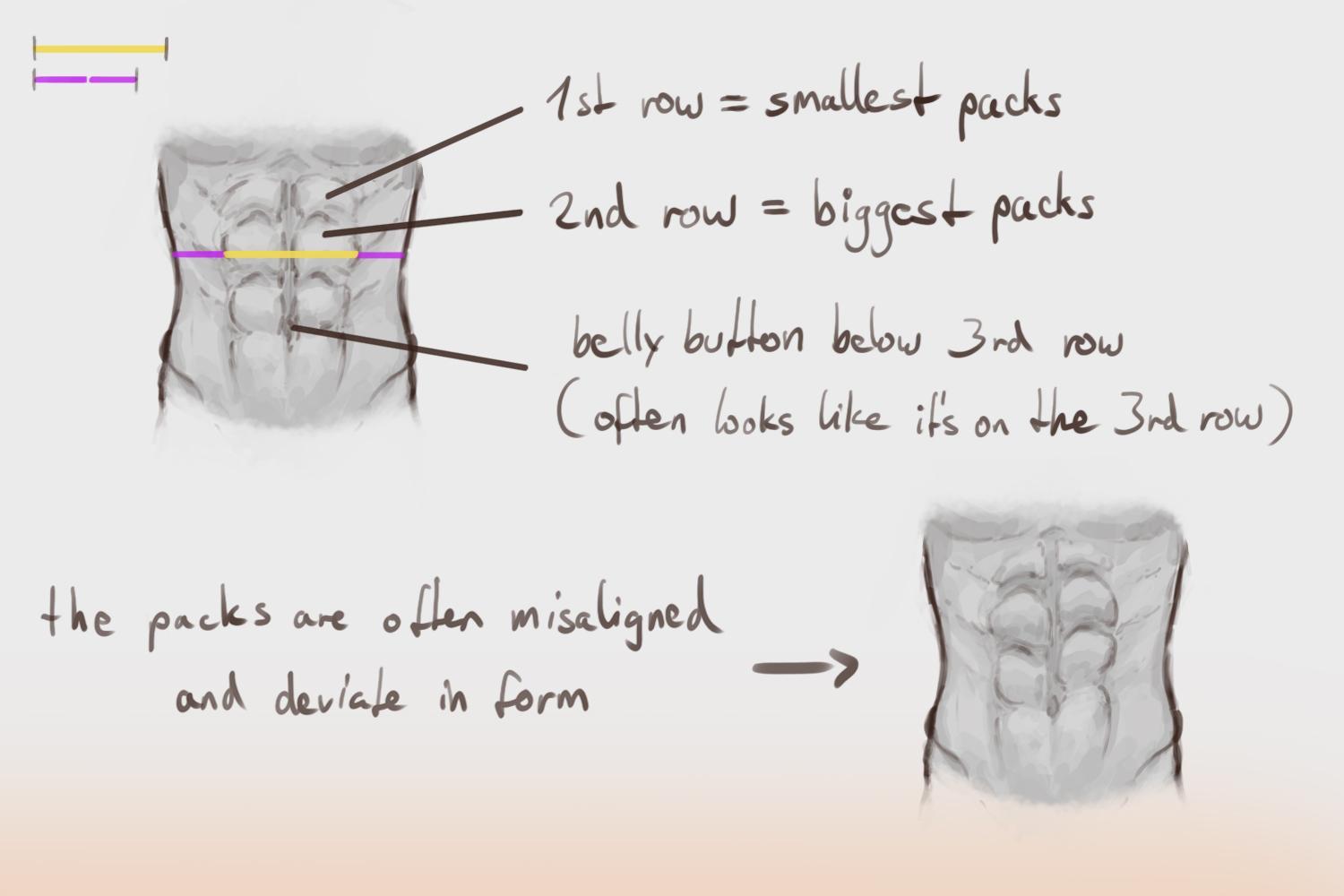 some "good to know" things; the size relations are more important than you think
some "good to know" things; the size relations are more important than you think
You can read more about "8 packs" in the advanced section below.
The 1st row of packs deviates on almost every human being. In general this means, if you draw perfectly aligned abs, they will look less natural.
Origin
- Pubic bone (Os pubis), more specifically on the superior pubic ramus (Ramus superior; ramus = branch)
- Pubic symphysis (Symphysis pubica), thats the cartilage between the two pubic bones
Insertion
- Cartilage of the 5th, 6th and 7th rib (there is cartilage at the front tip of each rib)
- Some muscle fibers connect to the breastbone (Sternum)
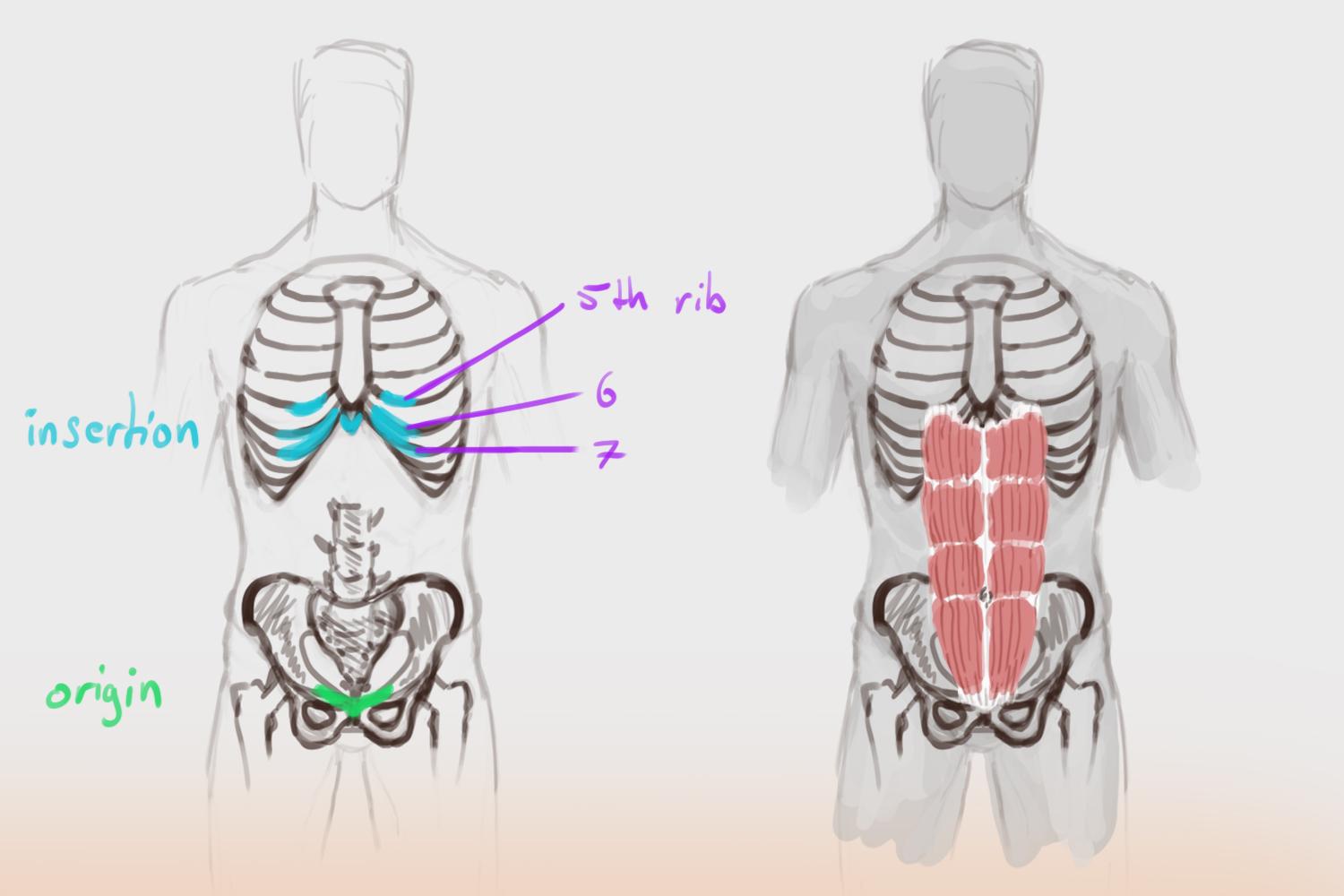 origin and insertion; some sources do it the other way round, but it doesn't really matter
origin and insertion; some sources do it the other way round, but it doesn't really matter
Functions
- Bending and crunching the torso forward; the familiar "sit up" motion represents this function pretty well
- Lifting/twisting the pelvis forward
- Breathing control; the abs are used mainly for exhaling
How to draw the muscle
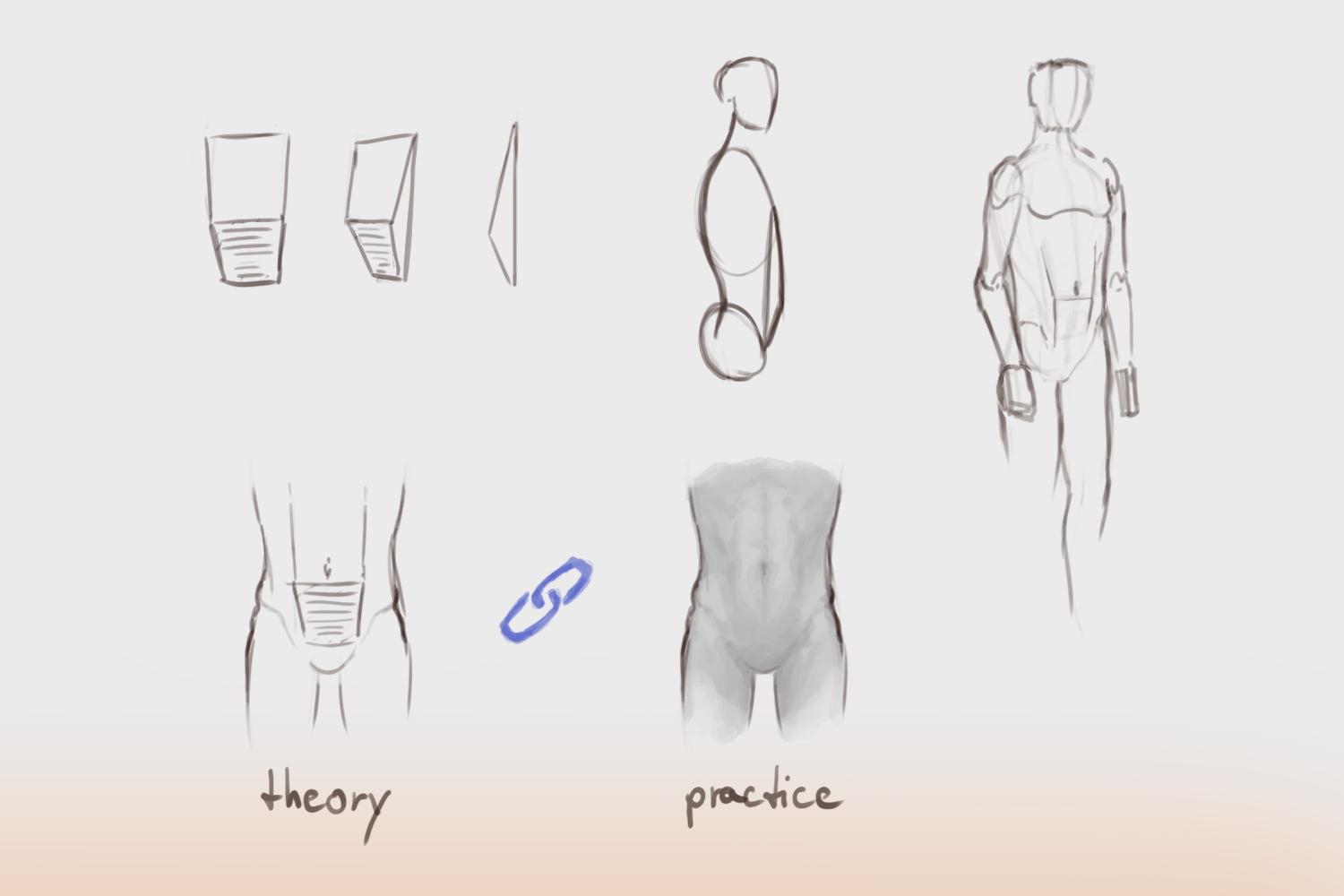 this shape helps you drawing the abs; it's a little more emphasized on female bodies
this shape helps you drawing the abs; it's a little more emphasized on female bodies
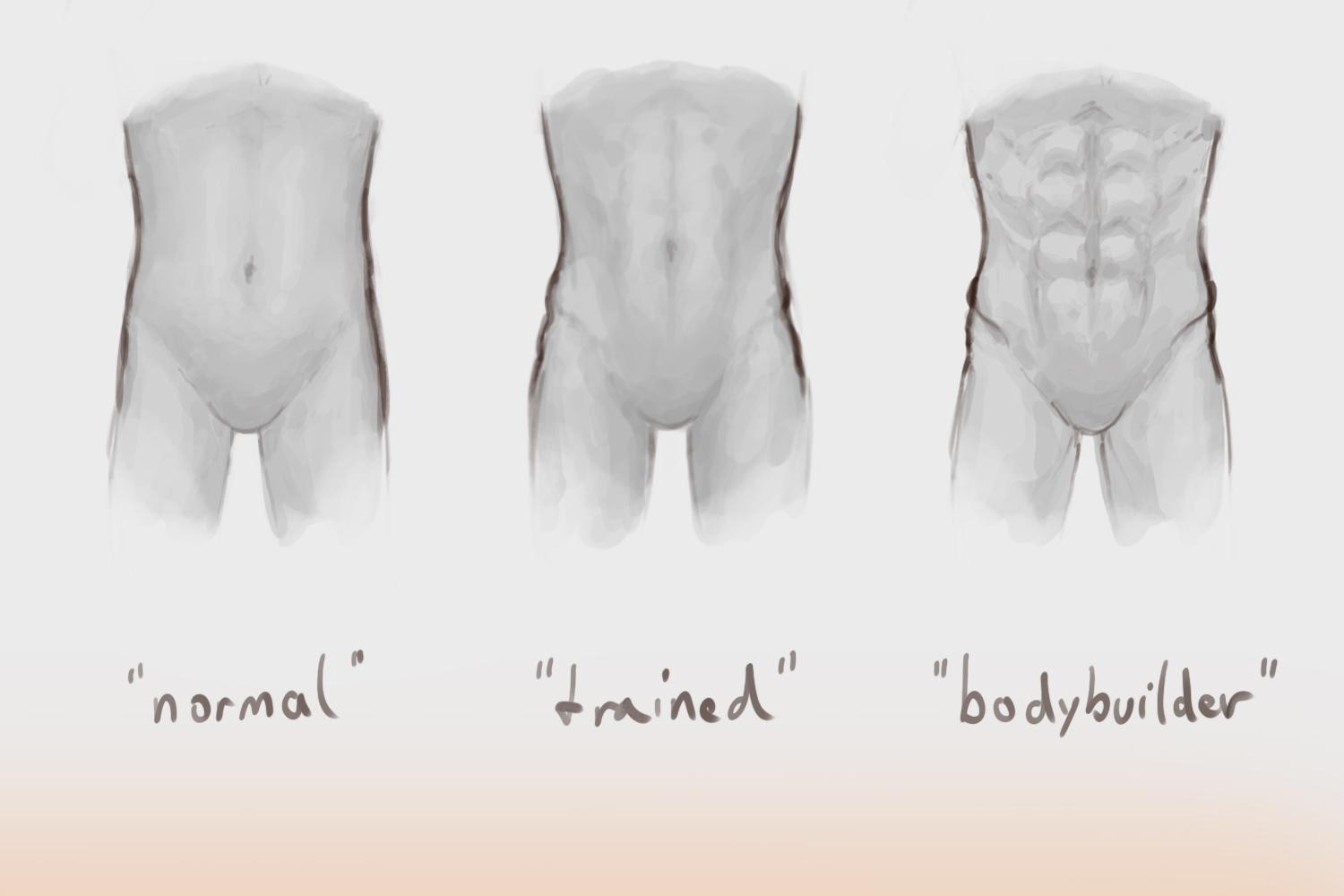 the two main factors are training and body fat percentage; note that women naturally have more subcutaneous fat
the two main factors are training and body fat percentage; note that women naturally have more subcutaneous fat
Advanced
Everything beyond the basics
The tendinous intersections (Intersectiones tendineae) determine how many packs you can have. Most people (around 60%) have 3 intersections which equals to 6 possible packs. In some media you see people with 8 packs to empathize their strength. The visual effect works, but in reality more packs don't make you stronger. Only around 20% even have 4 intersections = 8 possible packs, which means its based on luck (genetics) if you are even able to develop an 8 pack. Chances for 2, 4 or 10 packs are even lower than 20%.
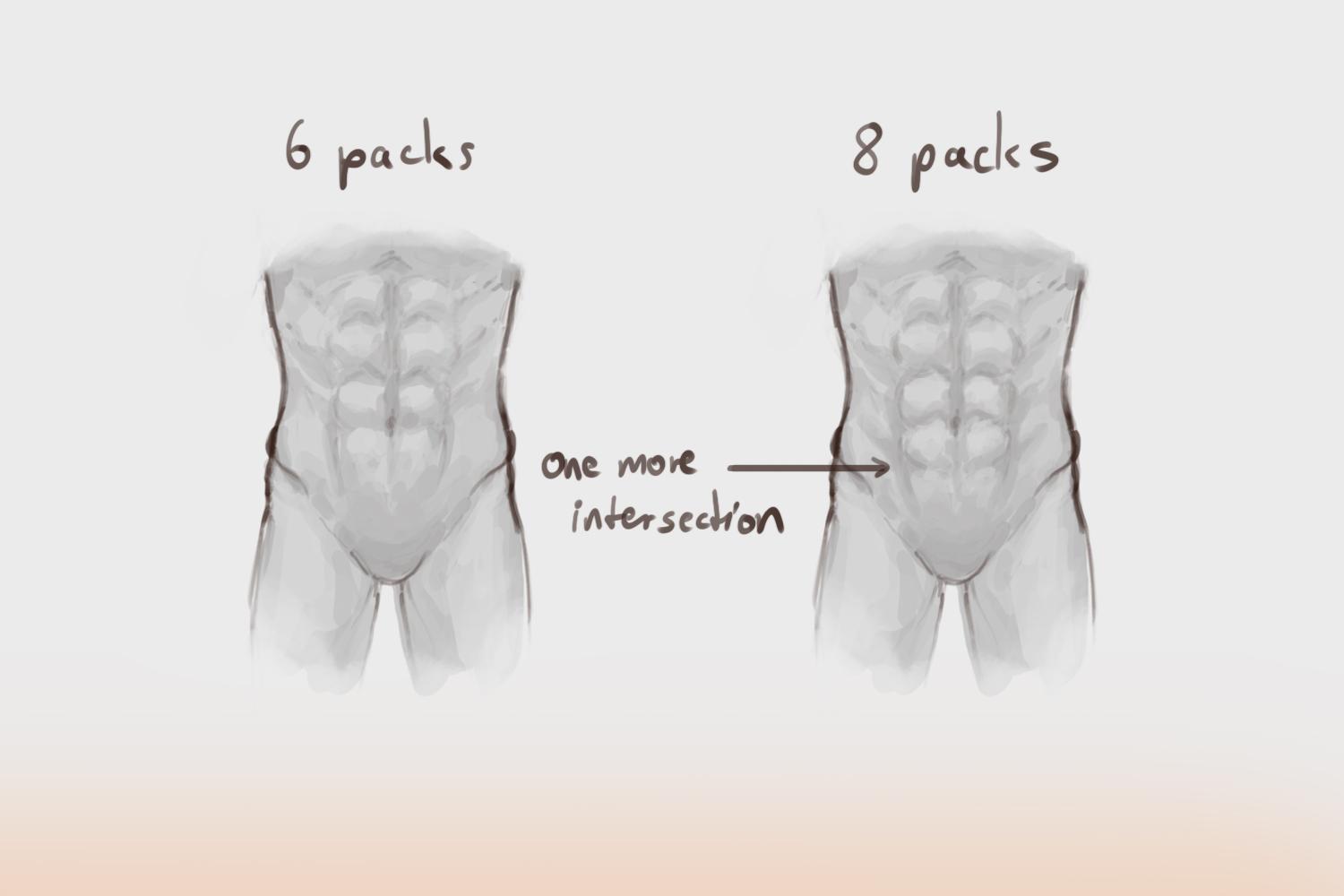 a side by side view for 6 and 8 packs; 10 packs just means that there is another intersection below that
a side by side view for 6 and 8 packs; 10 packs just means that there is another intersection below that
Reference Pictures (for study only)
From Wikimedia, Pixabay, Unsplash
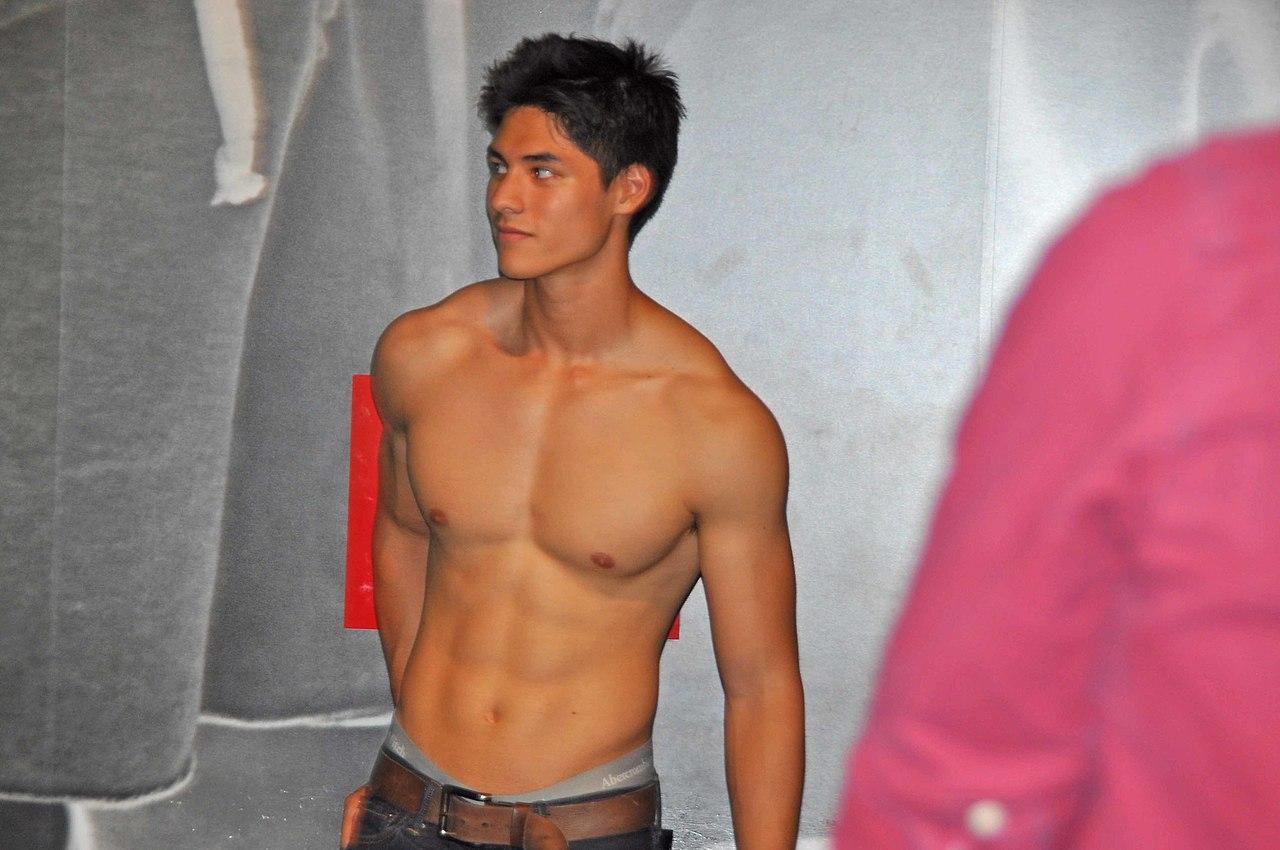
credit to: JoeInQueens
 credit to: Pexels
credit to: Pexels

credit to: Inder Mohan Singh Bodybuilder

credit to: Felipesilvasilva
 credit to: Felipesilvasilva
credit to: Felipesilvasilva
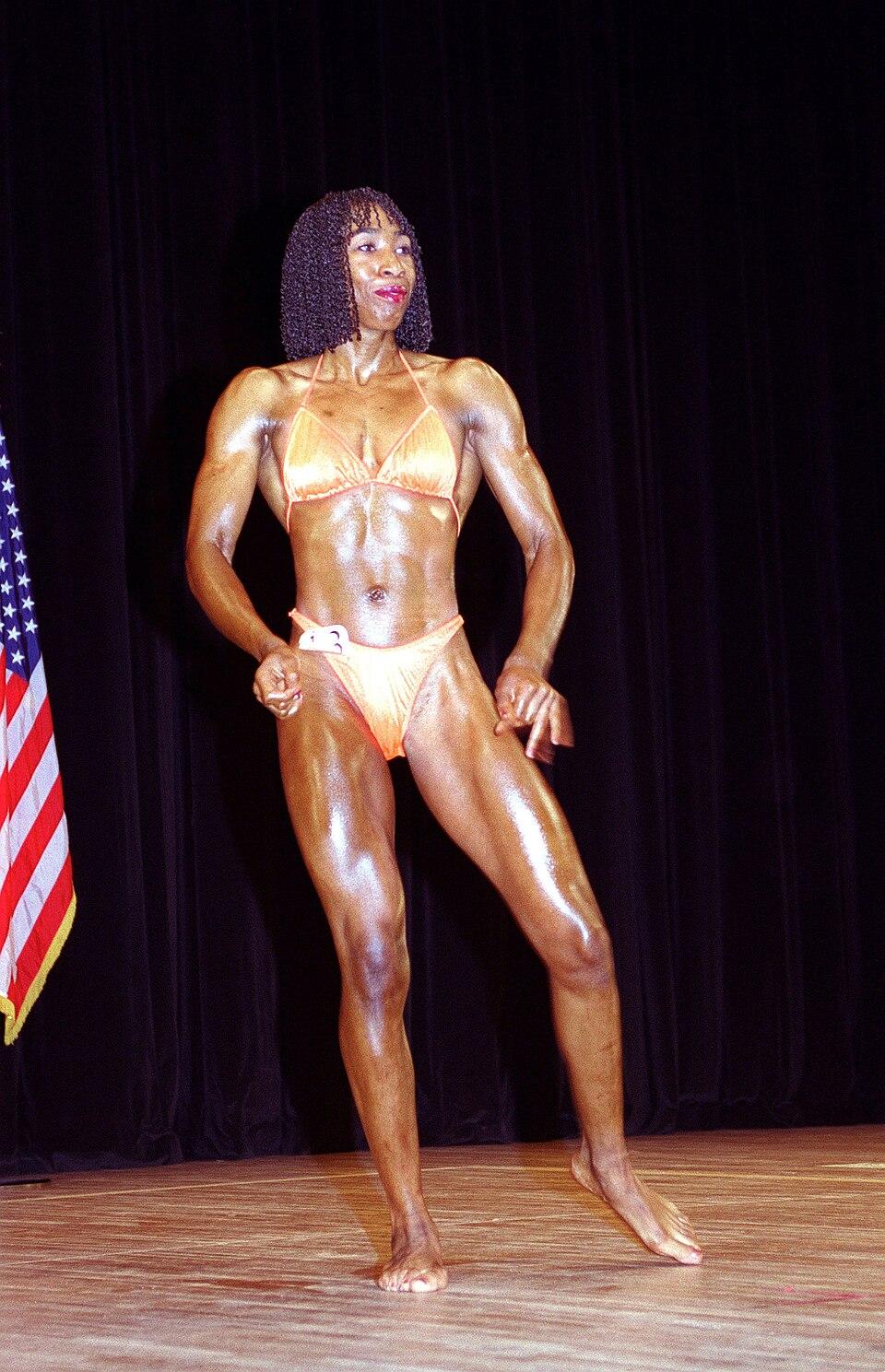
 credit to: Aliya Amangeldi (@aliyaamangeldi_photography)
credit to: Aliya Amangeldi (@aliyaamangeldi_photography)
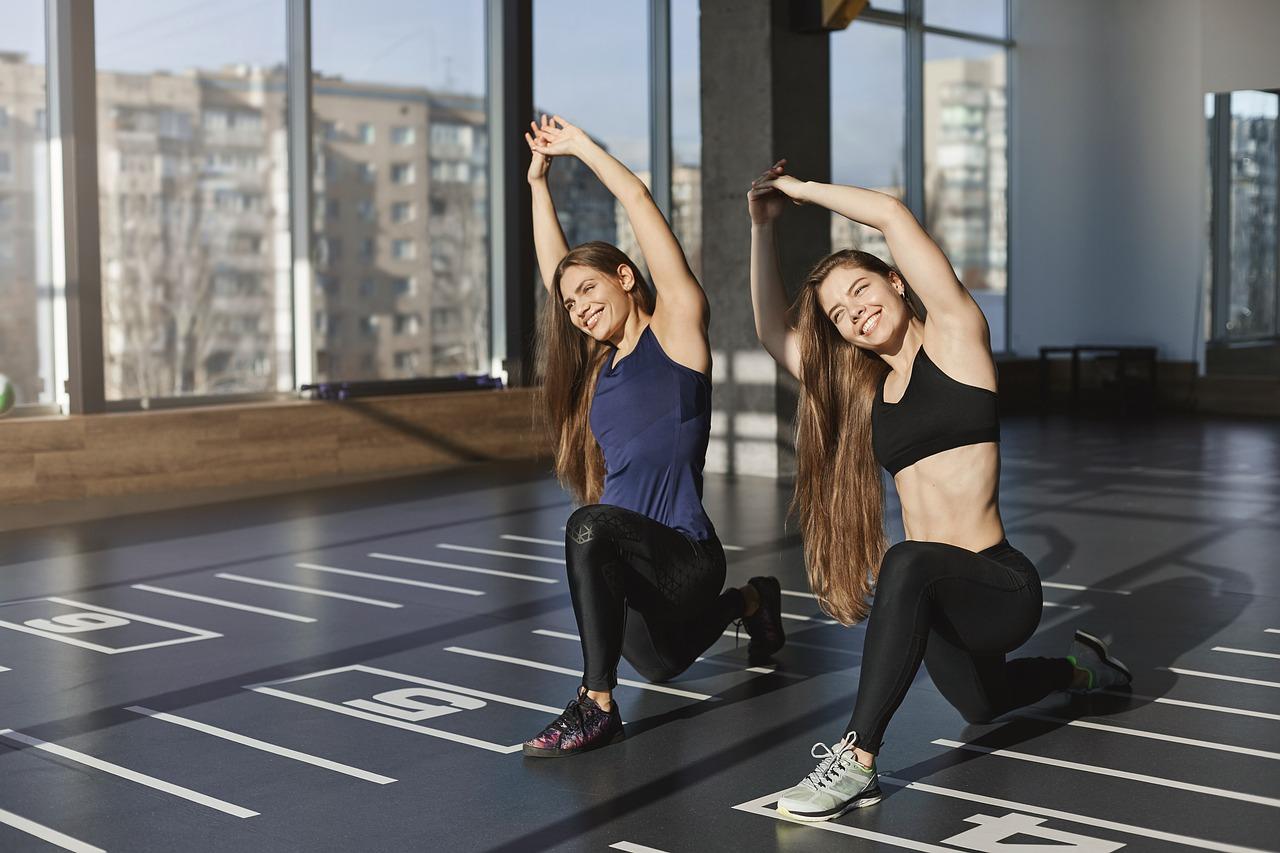 credit to: Maxhomefitness
credit to: Maxhomefitness
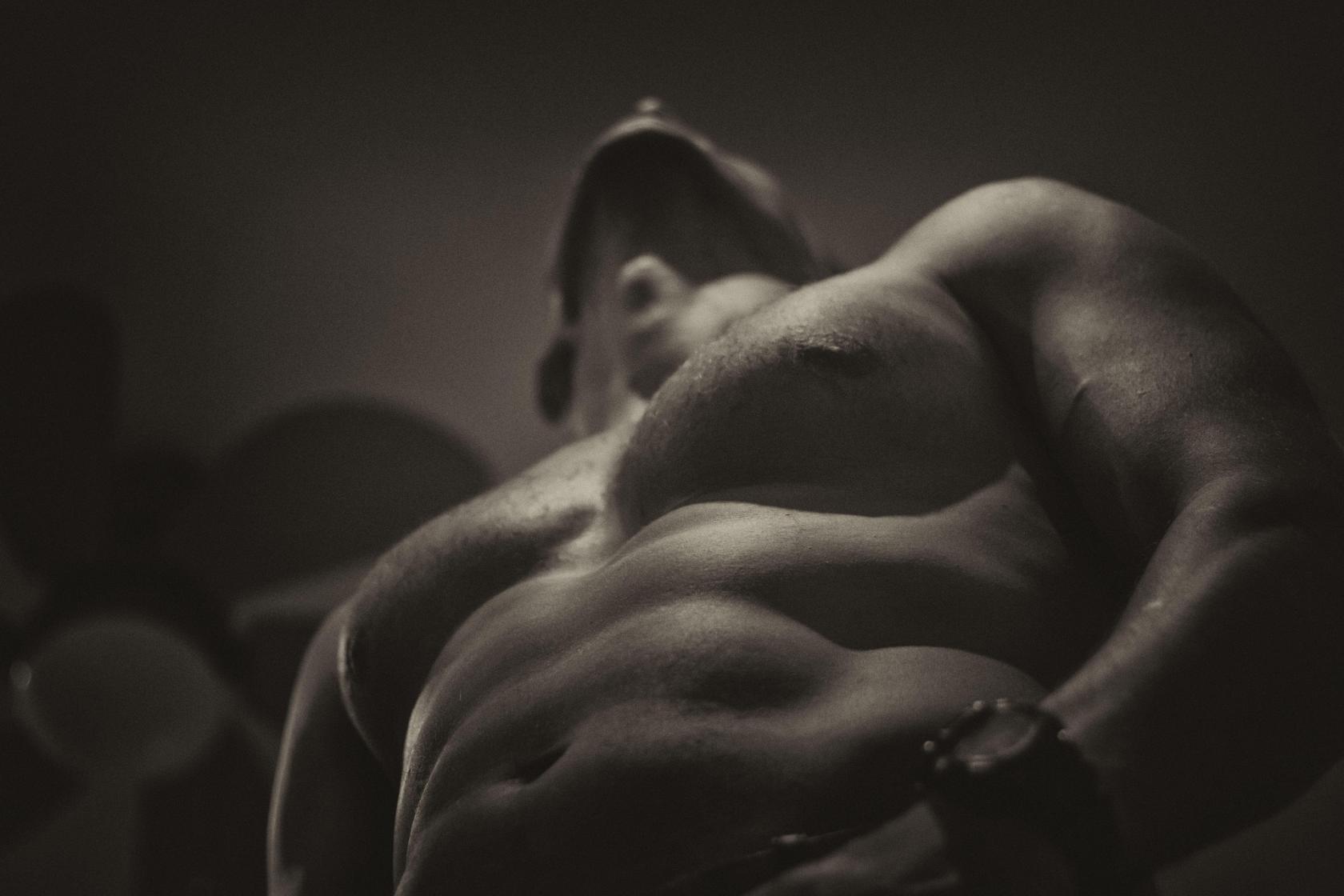 credit to: calibra
credit to: calibra
 credit to: Brian Lee (@sd_cosplayfit)
credit to: Brian Lee (@sd_cosplayfit)
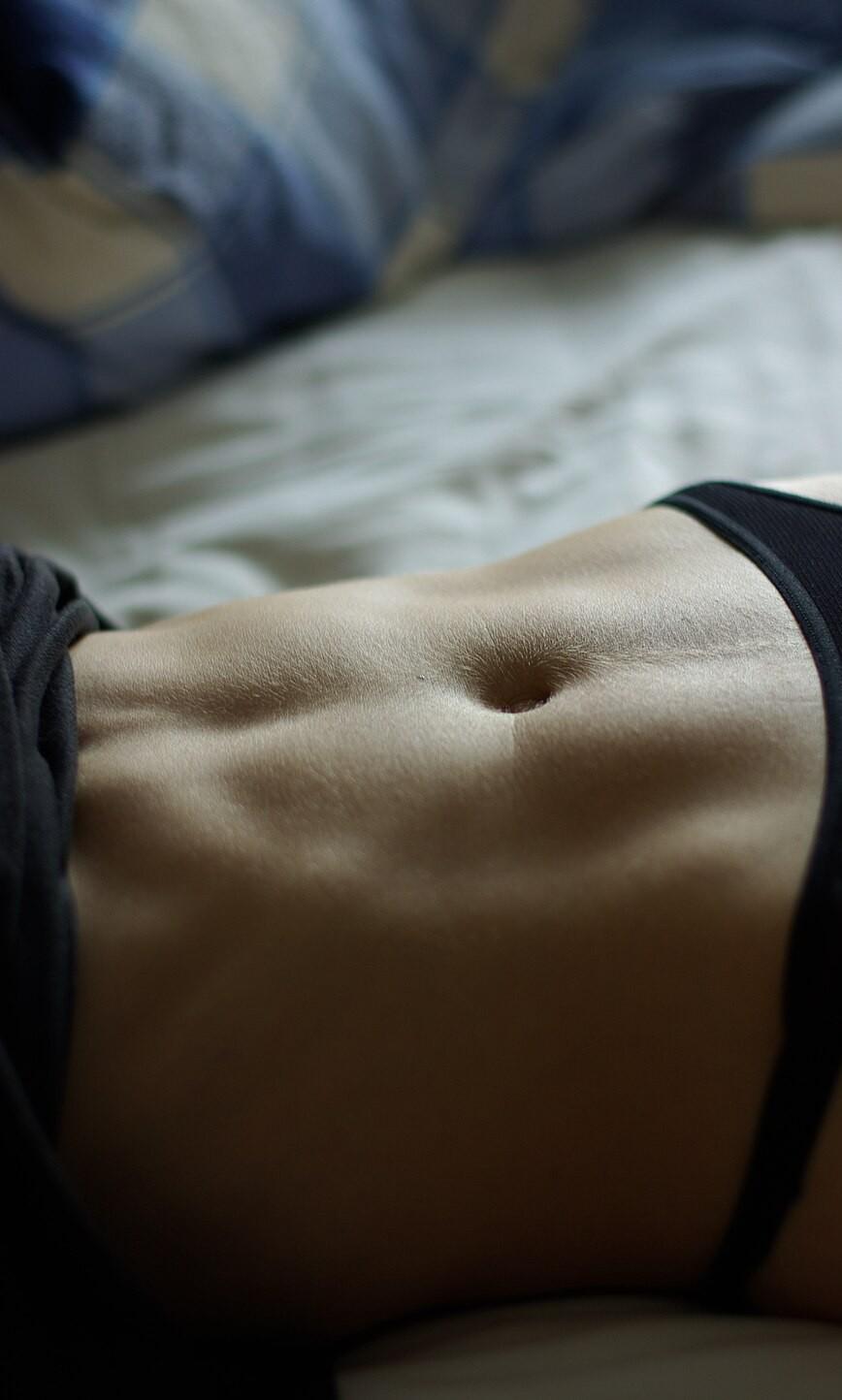 credit to: Russ Anderson
credit to: Russ Anderson
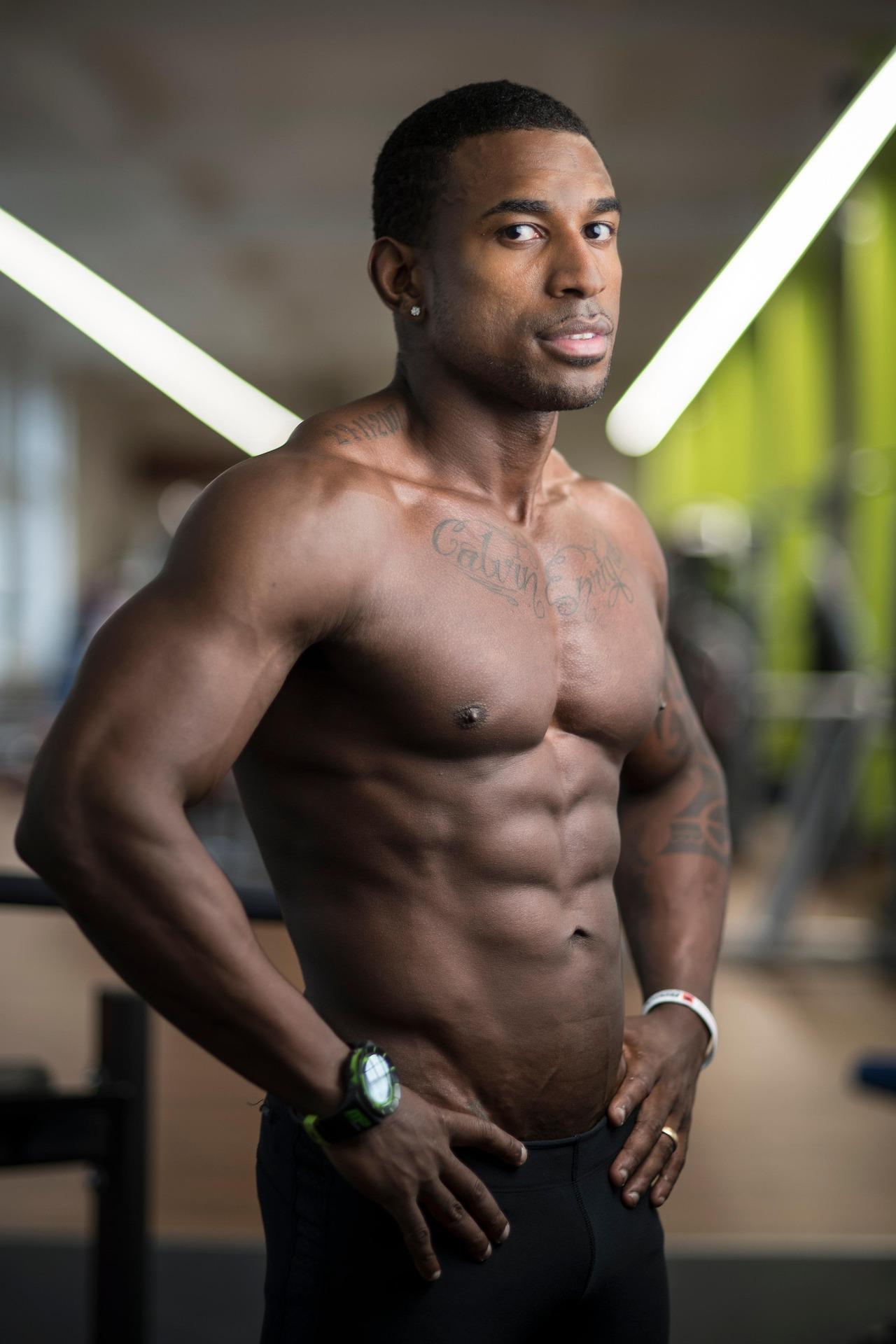 credit to: yeye8686
credit to: yeye8686
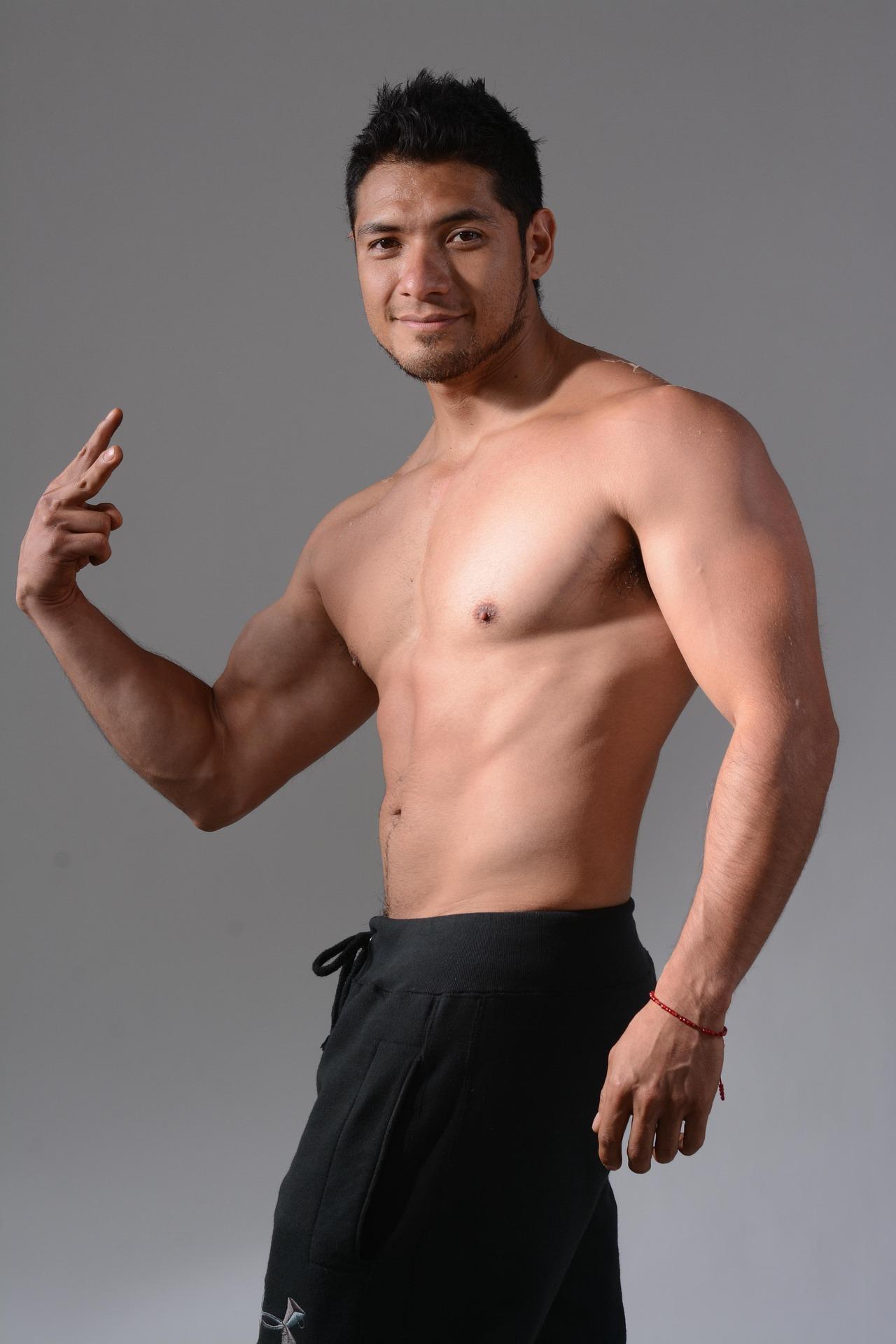 credit to: Keifit
credit to: Keifit
 credit to: Raman_Spirydonau
credit to: Raman_Spirydonau

No comments to display
No comments to display